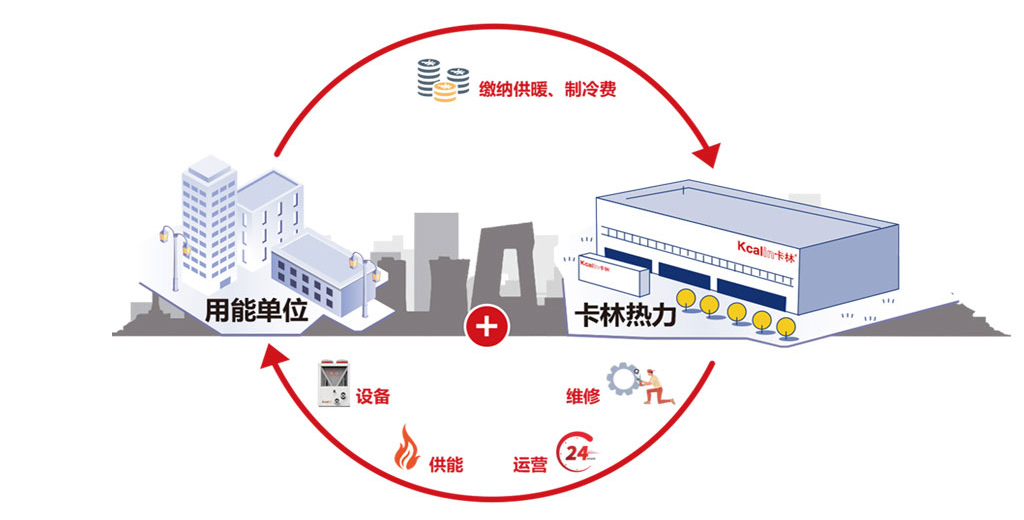The continuous increase in energy demand and the enhancement of environmental protection awareness pose many challenges to traditional centralized heating methods. Distributed heating, as an emerging heating method, has gradually attracted attention and application due to its advantages of high efficiency, energy conservation, and environmental protection.
Distributed heating is a method of distributing heating sources within a heating area, achieving efficient heating through multi-point supply and local regulation. Unlike traditional centralized heating, distributed heating does not rely on a single large-scale heating source, but utilizes various small heat source equipment, such as air source heat pumps, solar water heaters, gas wall mounted boilers, etc., to flexibly respond to the heating needs of different regions and users.
The advantages of distributed heating

Improving heating efficiency: Distributed heating systems can flexibly adjust the heating volume according to user needs, avoiding the efficiency reduction caused by long heating distances and large heat loss in centralized heating systems. Through multi-point heating, distributed heating can respond more quickly to user needs, improve heating efficiency, and ensure that users can obtain the required heat in a short period of time.
Energy saving: Distributed heating systems typically use efficient and energy-saving equipment, such as air source heat pumps and solar water heaters, which have high energy utilization rates and low operating costs. Compared to traditional centralized heating, distributed heating can reduce energy consumption, reduce carbon dioxide emissions, and achieve the goal of energy conservation and emission reduction.
Strong flexibility: The design and installation of distributed heating systems are more flexible, and can be personalized according to the structure of the building, user needs, and local climate conditions. This flexibility not only improves the adaptability of the heating system, but also meets the diverse needs of different users, providing a more comfortable heating experience.
Improving heating safety: Once a traditional centralized heating system malfunctions, the entire heating area will be affected. The distributed heating system disperses risks to various small heat source equipment, and even if one equipment fails, it will not affect the normal operation of the entire system, thereby improving heating safety.
Easy to maintain and manage: The maintenance and management of distributed heating systems are more convenient, and each small heat source equipment can operate and maintain independently, avoiding management problems caused by complex equipment and difficult maintenance in centralized heating systems. Distributed heating systems can also achieve remote monitoring and management through intelligent control technology, improving management efficiency.
The application of distributed heating in residential and commercial heating
Community heating: In community heating, distributed heating systems can flexibly configure different types of heat source equipment according to the needs of each building. For example, air source heat pumps can be installed on the roof of each building to provide heating and hot water services to residents by utilizing the heat in the air. Through distributed heating, residential areas can achieve independent control and on-demand heating, avoiding the problems of heat loss and uneven heating caused by long-distance transmission of heat pipes in traditional centralized heating systems.
Commercial heating: In commercial buildings, distributed heating systems also have broad application prospects. Commercial buildings typically have large areas and complex structures, and traditional centralized heating systems are unable to meet their diverse heating needs. Distributed heating systems can flexibly configure different heat source devices according to the needs of each floor and area, achieving partitioned heating and on-demand regulation. For example, in office buildings, a combination of gas wall mounted boilers and solar water heaters can be used to provide independent heating and hot water services for each office.
Intelligent control and management: Distributed heating systems can also be combined with intelligent control technology to achieve remote monitoring and management. By installing intelligent temperature controllers and sensors, the operation status and heating situation of various heat source equipment can be monitored in real time, and the heating amount can be adjusted in a timely manner to ensure the efficient operation of the system. Intelligent control technology can also automatically adjust heating parameters based on user habits and climate change, improving heating comfort and energy-saving effects.
Distributed heating, as an efficient, energy-saving, and environmentally friendly heating method, has many advantages such as improving heating efficiency, saving energy, strong flexibility, improving heating safety, and facilitating maintenance and management. With the continuous development of technology and the promotion of applications, distributed heating will play an increasingly important role in residential and commercial heating, providing users with more comfortable and efficient heating services. Choosing distributed heating can not only effectively improve heating efficiency, but also contribute to achieving a green and low-carbon future.







Comment